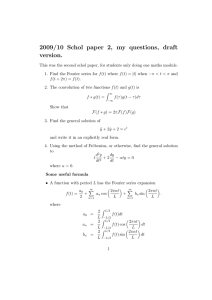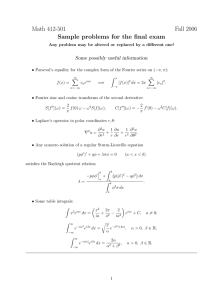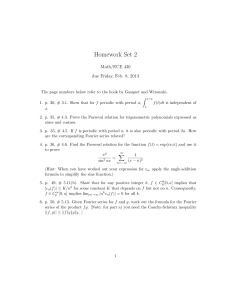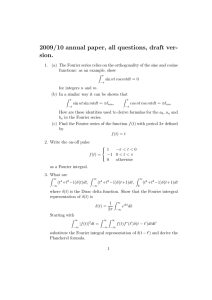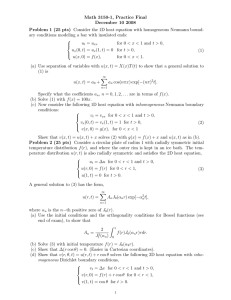MA22S3, sample for my four questions on the schol exams
advertisement
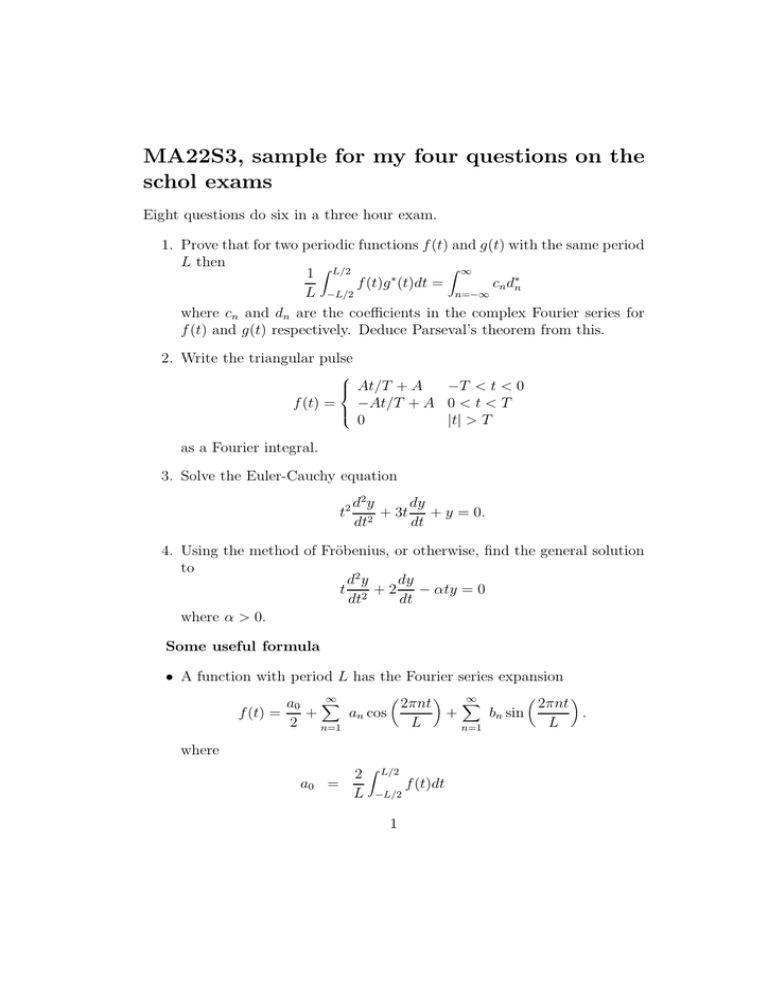
MA22S3, sample for my four questions on the schol exams Eight questions do six in a three hour exam. 1. Prove that for two periodic functions f (t) and g(t) with the same period L then Z ∞ Z 1 L/2 cn d∗n f (t)g ∗ (t)dt = L −L/2 n=−∞ where cn and dn are the coefficients in the complex Fourier series for f (t) and g(t) respectively. Deduce Parseval’s theorem from this. 2. Write the triangular pulse At/T + A −T < t < 0 f (t) = −At/T + A 0 < t < T 0 |t| > T as a Fourier integral. 3. Solve the Euler-Cauchy equation t2 dy d2 y + 3t + y = 0. 2 dt dt 4. Using the method of Fröbenius, or otherwise, find the general solution to d2 y dy t 2 + 2 − αty = 0 dt dt where α > 0. Some useful formula • A function with period L has the Fourier series expansion f (t) = ∞ ∞ X 2πnt 2πnt a0 X bn sin an cos + . + 2 L L n=1 n=1 where a0 = 2 Z L/2 f (t)dt L −L/2 1 bn Z 2 L/2 2πnt f (t) cos dt L −L/2 L Z 2πnt 2 L/2 dt f (t) sin = L −L/2 L an = • A function with period L has the Fourier series expansion f (t) = ∞ X cn exp n=−∞ where 2iπnt . L 1 Z L/2 −2iπnt cn = dt f (t) exp L −L/2 L • The Fourier integral or Fourier transform: f (t) = fg (k) = Z ∞ −∞Z 1 2π 2 dk fg (k)eikt ∞ −∞ dt f (t)e−ikt
